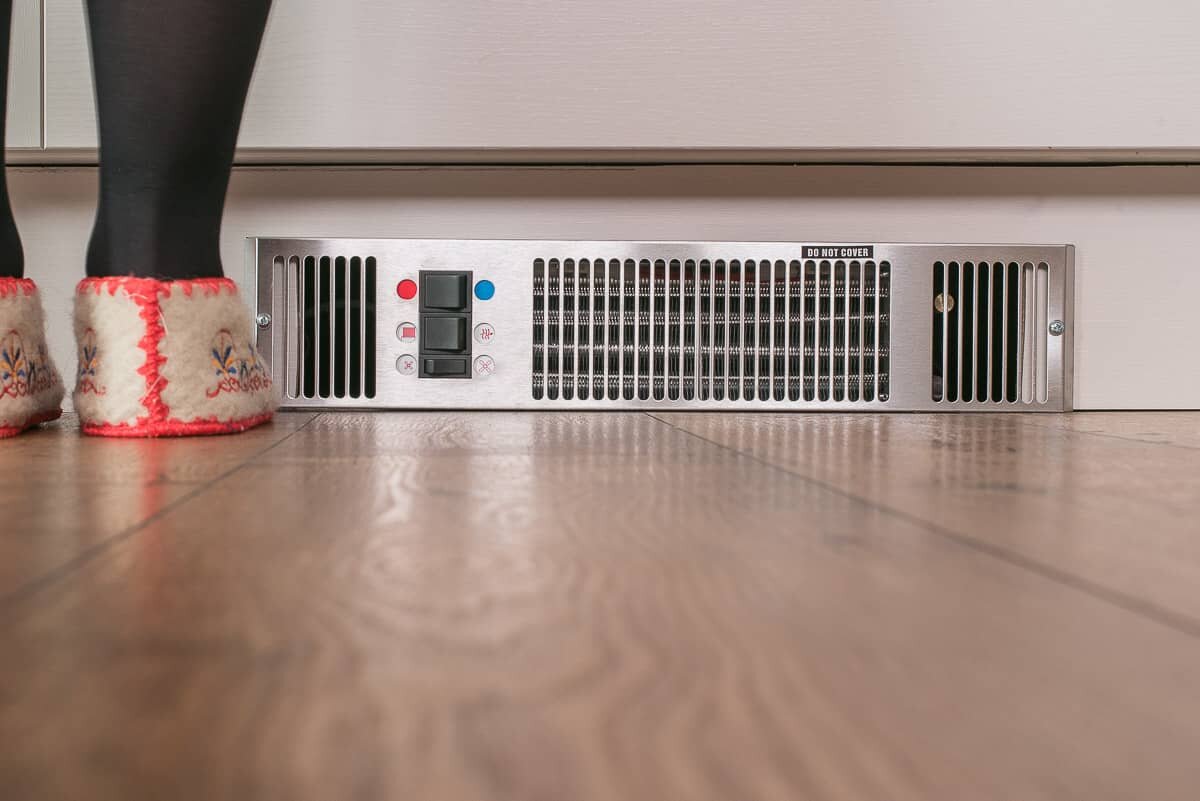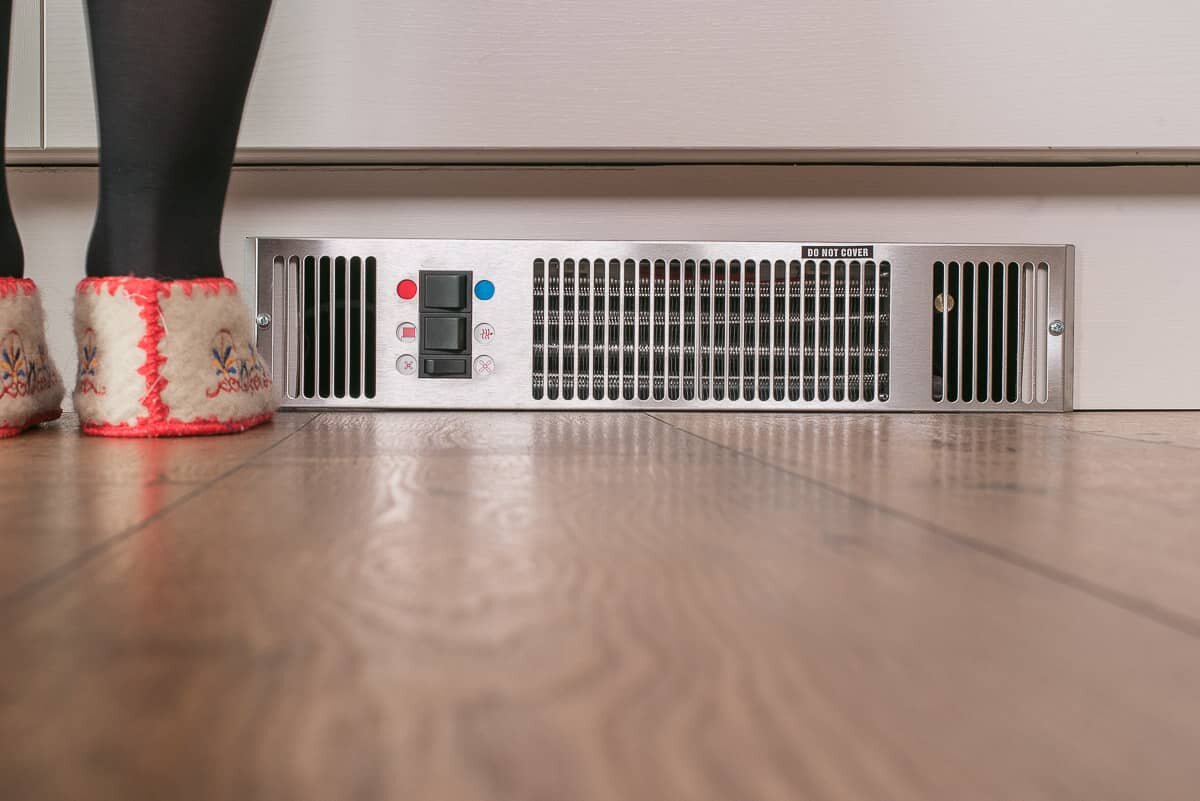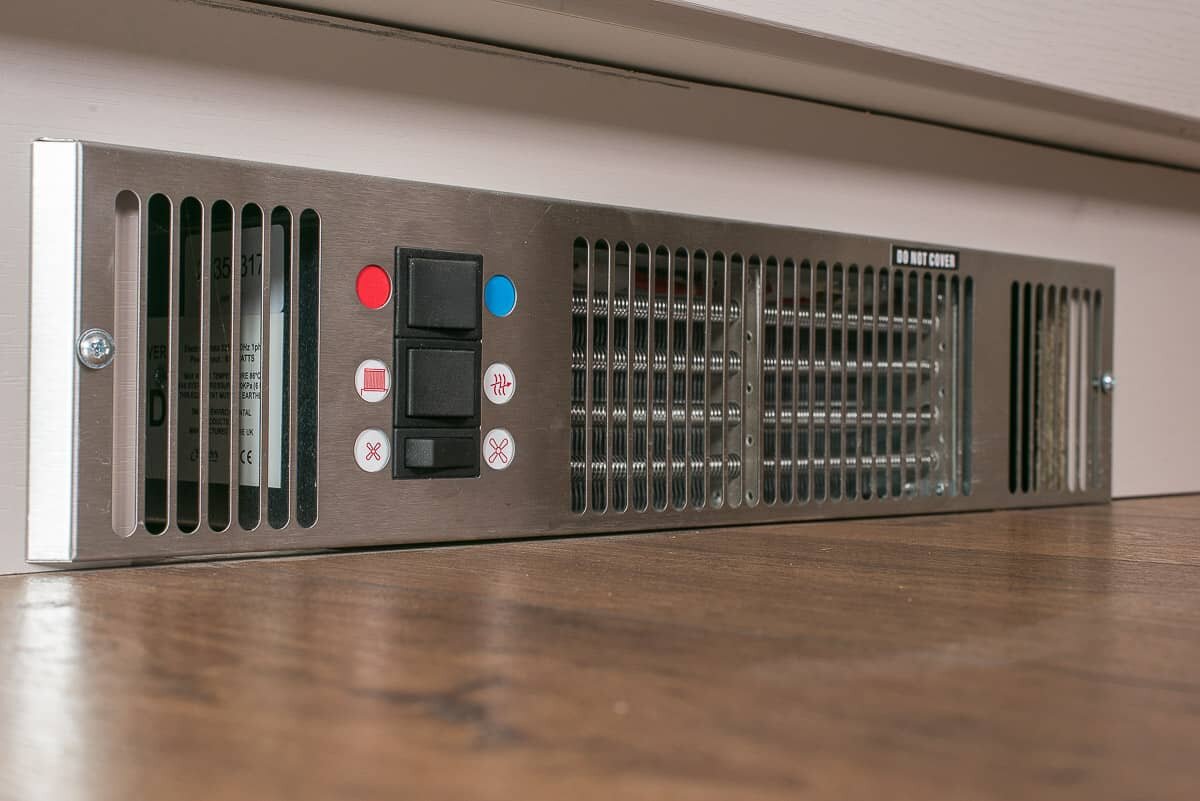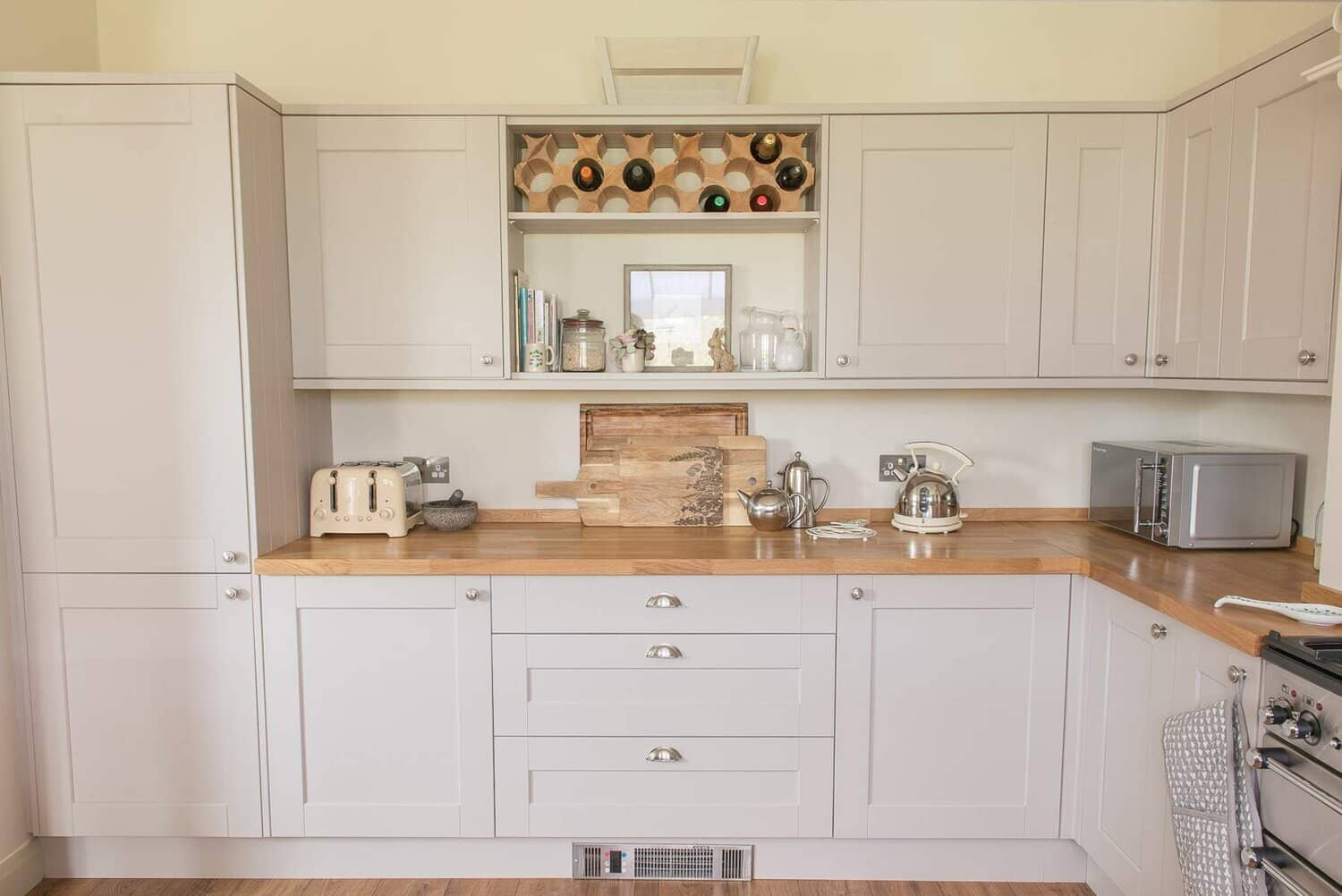How to heat your kitchen when you have no wall space for a radiator
This post contains affiliate links, for more information look at the disclosure page
When we looked into heating options for our kitchen diner knock through, we quickly realised we had limited wall space for radiators. The entire kitchen area of the kitchen diner is wall cupboards - so how do you heat that space??
We thought our only two options were radiators or underfloor heating. With pretty much zero wall space to hang a radiator on in this area, we looked into the latter first.
Why underfloor heating didn’t work for us
The main things we considered when researching underfloor heating was cost. Electric underfloor heating is fairly cheap and easy to install (a confident DIYer could do it), however the size of our kitchen / diner would mean that the cost of running it would be high. We erased that idea, and went onto the next…
The other option is plumbed-in underfloor heating and the costs for this are the other way around; it’s cheaper to run than electric as it’s plumbed into your central heating system (essentially like adding another radiator to the room) but it is quite expensive to install and it would add an additional layer of complexity to the renovation.
Not for us either… next!
How do you heat a kitchen with no wall space?
Our kitchen diner being an open plan space was fine in terms of heating the diner area (we installed a small column radiator to the dining area) but we couldn’t do the same in our kitchen area - the walls were 100% covered in cupboards and appliances.
It was only when we spoke with our builder that the option of a plinth heater became a real option. We weren't even aware of the existence of these little heaters but they answered all our heating prayers and didn’t mean we have to change the design of our cupboards just to hang a radiator.
What are plinth heaters?
Plinth heaters (also sometimes known as kickspace heaters) are used for areas like ours where space is at a bit of a premium. They utilise the little space under your kitchen cupboards where your kickbacks are installed, which otherwise is just wasted space. Honestly, if you’re currently putting together kitchen diner ideas that will have a large U or G plan kitchen and limited wall space, I’d strongly consider this as an option.
Plinth heaters come in a couple of formats, electric and hydronic. After doing plenty of research (and not really finding much information about them) we discovered that the difference is a little like the difference between underfloor heating systems.
How do Electric Plinth Heaters work?
These use heated elements and a fan to heat your space and are usually as straightforward as plugging them in and screwing them in place. What did we discover about them? You get instant heat straight away upon turning them on, however the downside of this is how energy-hungry they are because those heated elements are pretty expensive to run.
How do Hydronic Plinth Heaters (central heating plinth heaters) work?
As the "hydro" in the name suggests these have little radiators inside them and are plumbed into the central heating system. A central heating engineer would need to help you add this into your system, and these automatically switch on when your central heating turns on. Or, you can switch it off completely with the flick of a switch (just use your toe :) )
Some models come with an electric heating element, just in case you need that extra bit of warmth or your central heating isn’t on and you don’t want to turn it on just for one room.
To heat our space, we decided that we would use a combination of a Smiths Hydronic Plinth Heater Space Saver 3 which would provide heat for the kitchen area, and a fairly high wattage radiator for the dining area. Being quite focused on keeping the long term running costs down, we decided that this would be the best solution whilst maintaining our desired aesthetic.
Which plinth heater is best?
We did a lot of research on this and if you are reading this you may have found that the information iout there is quite sparse! After much consideration we opted for the Smiths Hydronic Plinth Heater Space Saver 3 which has since been updated to a newer model. Read on below for our thoughts.
*Pro-tip* - always do your maths when calculating how much heating you need, there's a multitude of different heating calculators out there - we ended up doing a bunch of them and realising that they always came up with slightly different wattage. In the end we took an average of all of them.
Benefits of central heating plinth heaters (hydronic)
They save space and can be used when you have no wall space
They have the central heating AND electric as an option for flexible use
They maintain the aesthetic appeal of your space as they are fairly hidden
When used on the hydro setting they are cheaper to run because it's just using the existing heating system
The fan can be used on hot days to create some air circulation
Are plinth heaters noisy?
During our research this was one of our main concerns, as it’s obviously basically impossible to understand what is ‘noisy’ from the web, and you won’t fully know until it is installed.
There are two settings on the one we have, the low setting is barely audible (as they are down low the sound doesn’t travel) and on the high setting (which we don’t often use) it’s probably about the same volume as a fan you might use for cooling a room in summer.
We honestly don’t notice it on the low setting, and with the noise in a kitchen anyway, it’s even less noticeable.
What are the main considerations for hydronic plinth heaters?
They have a fan with two settings and the fan does have a noise, the strong setting is a little bit noisier (although you do get used to it and kitchens generally are noisy anyway)
If you are also using the electric for a boost this is fairly costly to run
For some, even the addition of the look of the panel may not be palatable for their aesthetic but when space is a premium, sometimes sacrifices need to be made
Thoughts overall
We’re very pleased with our Smith’s plinth heater. Just like a normal radiator, it does it’s job (heats the space) with no fuss and good control. It puts out a good level of heat for a kitchen area and we like how it can be turned off if you’re cooking and the kitchen is getting naturally hot with the oven and pans etc.
Overall we are so glad plinth heaters like this exist as it gave us much more storage space in the kitchen - we would have had to sacrifice a whole area of cupboards to hang a radiator if this didn’t exist.
Hope this helps you and best of luck with your renovation!
Fifi (& Neil) xoxo
Before you go
Make sure to download our FREE guide to surviving your renovation if you want to know EXACTLY what you’re getting yourself into!







